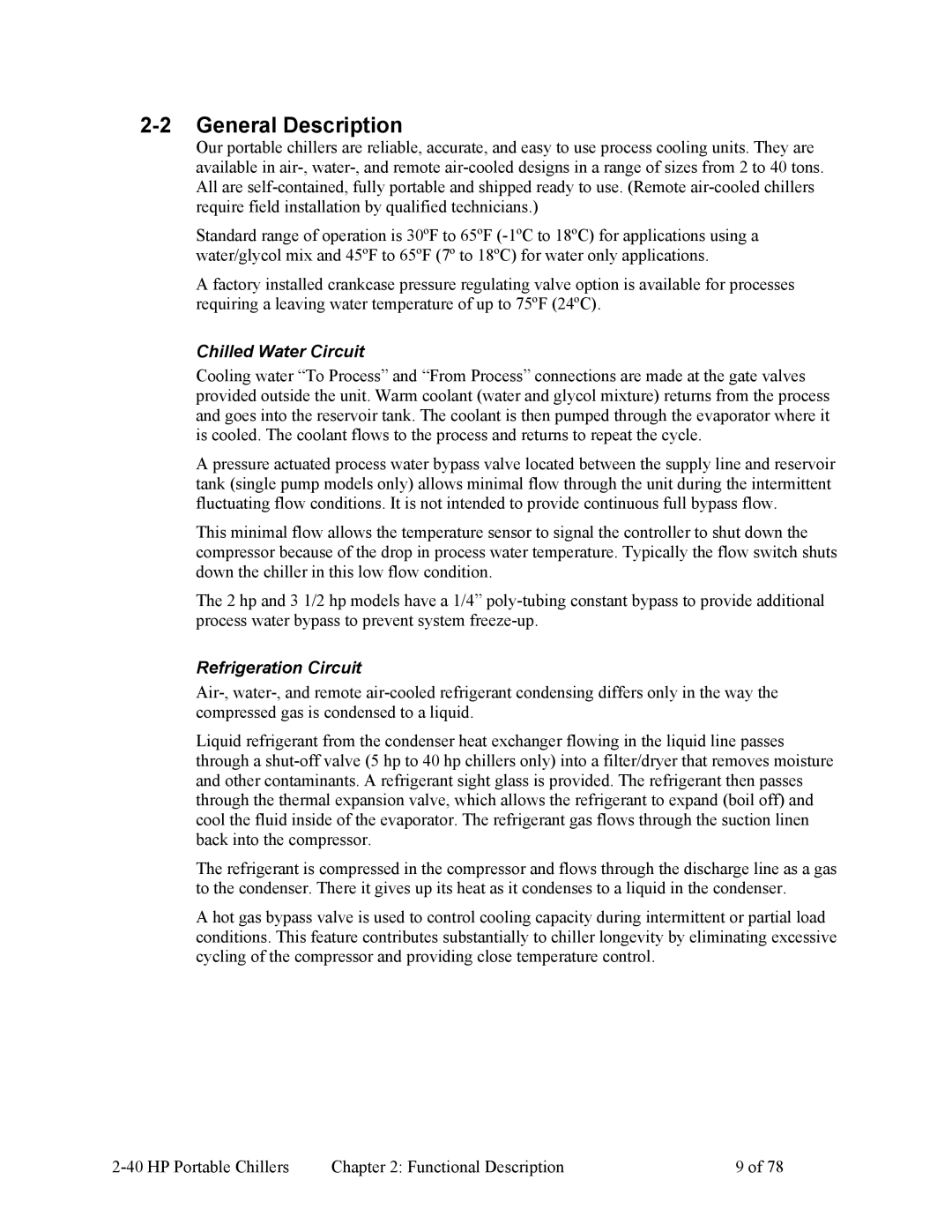2-2 General Description
Our portable chillers are reliable, accurate, and easy to use process cooling units. They are available in
Standard range of operation is 30ºF to 65ºF
A factory installed crankcase pressure regulating valve option is available for processes requiring a leaving water temperature of up to 75ºF (24ºC).
Chilled Water Circuit
Cooling water “To Process” and “From Process” connections are made at the gate valves provided outside the unit. Warm coolant (water and glycol mixture) returns from the process and goes into the reservoir tank. The coolant is then pumped through the evaporator where it is cooled. The coolant flows to the process and returns to repeat the cycle.
A pressure actuated process water bypass valve located between the supply line and reservoir tank (single pump models only) allows minimal flow through the unit during the intermittent fluctuating flow conditions. It is not intended to provide continuous full bypass flow.
This minimal flow allows the temperature sensor to signal the controller to shut down the compressor because of the drop in process water temperature. Typically the flow switch shuts down the chiller in this low flow condition.
The 2 hp and 3 1/2 hp models have a 1/4”
Refrigeration Circuit
Liquid refrigerant from the condenser heat exchanger flowing in the liquid line passes through a
The refrigerant is compressed in the compressor and flows through the discharge line as a gas to the condenser. There it gives up its heat as it condenses to a liquid in the condenser.
A hot gas bypass valve is used to control cooling capacity during intermittent or partial load conditions. This feature contributes substantially to chiller longevity by eliminating excessive cycling of the compressor and providing close temperature control.
| Chapter 2: Functional Description | 9 of 78 |
